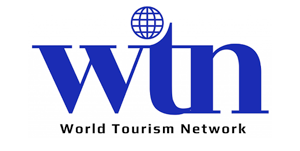The Philippines is setting its sights on becoming a regional hub for health and wellness tourism, with the Department of Tourism (DOT) aiming to welcome up to one million medical tourists in the coming years. This ambitious target comes as the country seeks to capitalize on its competitive pricing, quality healthcare facilities, skilled healthcare workers, and renowned Filipino hospitality.
Tourism Secretary Christina Frasco, along with First Lady Liza Marcos, recently inaugurated the International Health and Wellness Tourism Congress in Taguig City. The two-day event attracted tourism buyers from around the world and highlighted the country’s unique offerings in the health and wellness sector, including traditional Filipino healing techniques such as “hilot,” combined with modern medical facilities.
“We have this Filipino ancient healing technique called ‘hilot,’ which is one of the highlights of this congress, perfectly paired with our world-class healthcare facilities and healthcare personnel,” Frasco said, emphasizing that the country’s approach to wellness is deeply rooted in Filipino culture, care, and compassion.
Currently, the Philippines welcomes around 250,000 health and wellness tourists annually. These visitors come for a variety of reasons, including medical treatments, dental care, and wellness retreats at world-class spas. Tourism Director Paulo Tugbang shared that the country aims to increase this number to half a million or even one million over the next few years.
Competitive Advantages in Medical Tourism
According to Agora CEO Hadi Malaeb, the Philippines is uniquely positioned to be a major player in the global health and wellness tourism market. The country offers competitive pricing, advanced healthcare infrastructure, and highly skilled, English-speaking healthcare workers. Furthermore, the Philippines’ appeal as a tourist destination makes it an attractive choice for medical tourists seeking recovery and relaxation in a tropical paradise.
Malaeb noted that the global health and wellness tourism market was valued at $800 billion in 2023, and the Philippines has the potential to capture a significant share of this market. He emphasized the importance of continued investments in healthcare infrastructure, talent development, and public-private partnerships to ensure the Philippines remains competitive on the global stage.
“Focuses on the wellbeing and on the health of the individual. This goes for spa treatment, for prevention of disease, and for the treatment of disease. And I strongly believe that the Philippines has immense potential in developing this segment and in becoming one of the world leaders in it,” Malaeb said.
He added that if the country markets its offerings correctly and targets the right audience, the number of health and wellness tourists could reach half a million within the next five to ten years, representing a substantial increase from current figures.
Collaborations to Drive Growth in Medical Tourism
Tourism Secretary Frasco emphasized the importance of collaboration between various sectors to achieve the country’s medical tourism goals. The DOT is working closely with the Department of Health (DOH) and private medical facilities to improve the overall quality of health tourism packages, ensure global accreditation, and meet international standards.
Frasco highlighted the role of Filipinos in the success of this sector, pointing out that the genuine care and compassion that Filipino healthcare workers provide is unmatched. This, coupled with competitive pricing, gives the Philippines a strong edge in attracting foreign medical tourists.
“Napakacompetitive ng pricing ng Pilipinas in terms of its ability to offer health and wellness tourism packages. And most importantly yung aruga ng Pilipino is really second to none. The ability to exercise genuine passion, care, and compassion para sa ating mga pasyente ay isa sa ating napakagandang assets ng health and wellness tourism,” Frasco said.
In addition to traditional healthcare services, the country is focusing on wellness tourism, offering treatments that address both physical and mental wellbeing. This includes everything from spa treatments and holistic retreats to medical interventions for preventive care and serious health conditions.
The Philippines’ Unique Offerings in Health and Wellness
One of the highlights of the International Health and Wellness Tourism Congress was the showcase of the hilot technique, an ancient Filipino healing method that combines massage with the use of herbal oils. This traditional practice is being integrated into modern wellness packages, offering a unique blend of culture and therapy that sets the Philippines apart from other medical tourism destinations.
Meanwhile, the country’s private hospitals and medical centers are equipped with state-of-the-art technology, and many have already received international accreditation. These facilities, combined with the country’s skilled healthcare professionals, make the Philippines an attractive destination for medical procedures, from cosmetic surgery to orthopedic treatments and dental care.
The DOT also plans to focus on promoting the spa and wellness industry, which is a growing segment of the global health and wellness market. Many resorts and wellness centers across the Philippines offer specialized treatments and programs designed to rejuvenate the mind and body, further enhancing the country’s appeal as a wellness destination.
Looking Ahead: Marketing the Philippines as a Health and Wellness Destination
With the global health and wellness tourism market continuing to expand, the Philippines is poised to become a key player in the region. To achieve its goal of welcoming one million health and wellness tourists, the country will need to focus on strategic marketing, building partnerships with international healthcare providers, and showcasing its unique combination of traditional healing practices and modern medical care.
Malaeb believes that with the right infrastructure and marketing efforts, the Philippines could become a leading destination for medical tourism in the next decade. He encouraged the country to focus on attracting tourists from neighboring countries as well as Western markets where healthcare costs are significantly higher.
In conclusion, the Philippines’ commitment to enhancing its health and wellness tourism offerings, supported by its competitive advantages, positions the country as a future leader in the global medical tourism sector.
- TAGS / KEYWORDS:


















.png)














